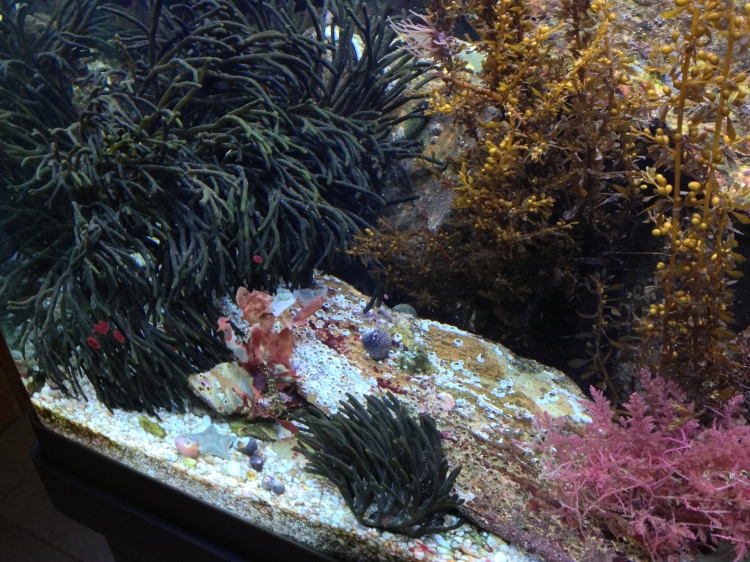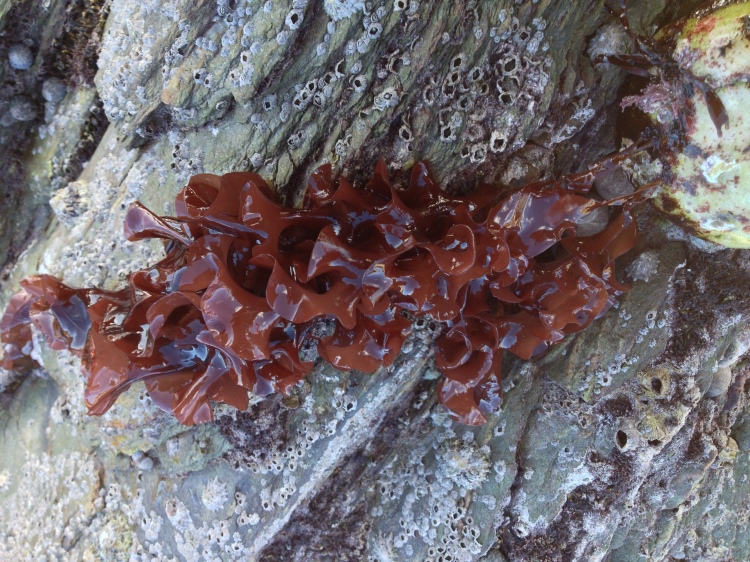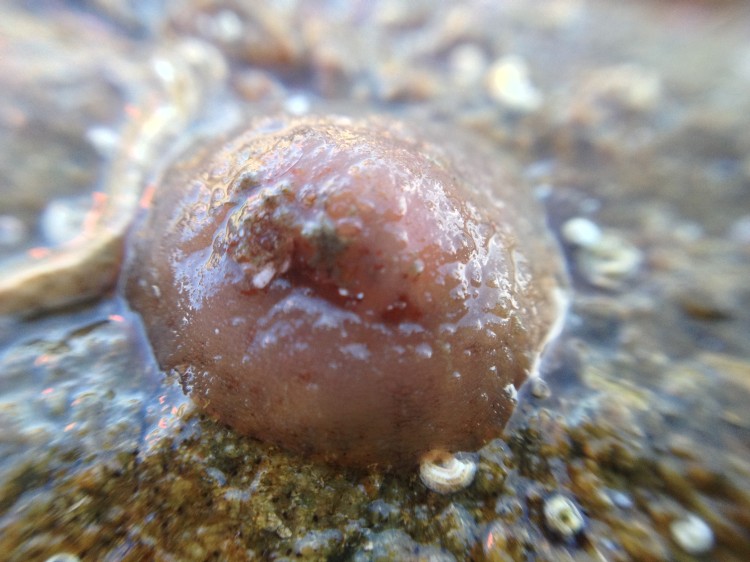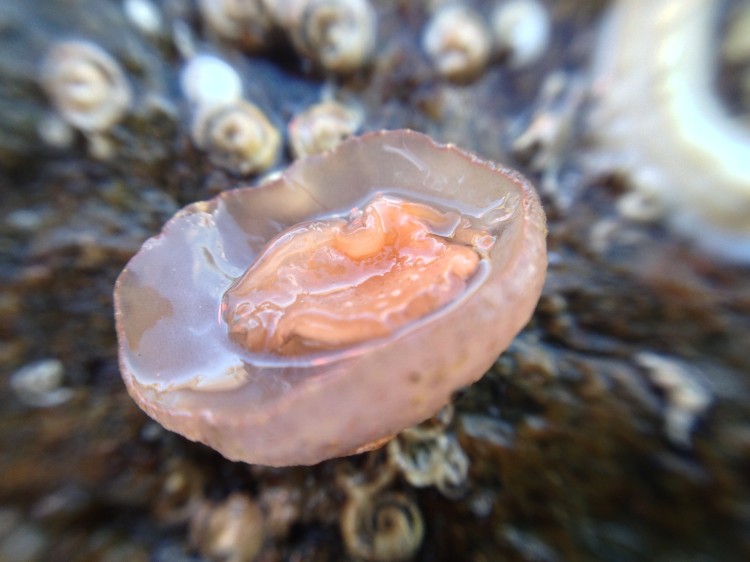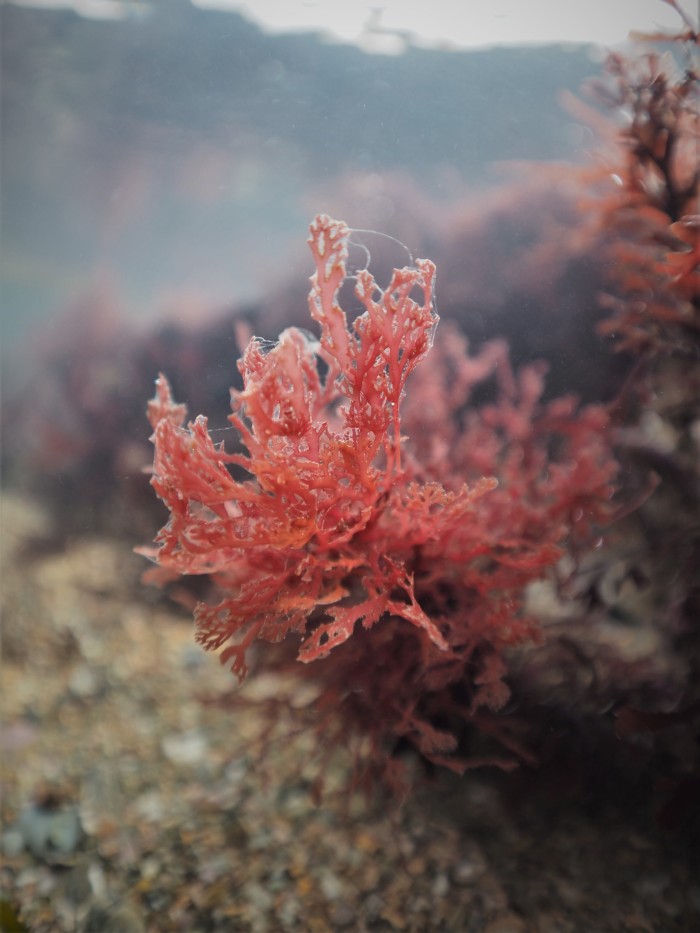 I joined a seaweed identification get-together at the Cornwall Wildlife Trust organised by Matt Slater last week. It was fun to chat with likeminded people and also made me want to stick my head underwater again! The weather has been horrible for over half a year now and I have been in only a few times, with little chance to take decent photos, hence the blog inactivity. This has been especially frustrating as March is the best month for seaweeds (see the 2017 Falmouth Seaweeds tag) and I am missing my window. I therefore jumped in the next day. The tides were at their very lowest, actually too low for most of my usual rockpool spot! The viz was not great due to the 20+ mph winds but just about good enough for the fisheye lens. I really hope for some good weather in the next 2-3 weeks to be able to make the seaweed photos I really have in mind.
I joined a seaweed identification get-together at the Cornwall Wildlife Trust organised by Matt Slater last week. It was fun to chat with likeminded people and also made me want to stick my head underwater again! The weather has been horrible for over half a year now and I have been in only a few times, with little chance to take decent photos, hence the blog inactivity. This has been especially frustrating as March is the best month for seaweeds (see the 2017 Falmouth Seaweeds tag) and I am missing my window. I therefore jumped in the next day. The tides were at their very lowest, actually too low for most of my usual rockpool spot! The viz was not great due to the 20+ mph winds but just about good enough for the fisheye lens. I really hope for some good weather in the next 2-3 weeks to be able to make the seaweed photos I really have in mind. The very top photo is Berry wart cress Sphaerococcus coronopifolius shot with a very shallow depth of field. The single stone above hosts a whole variety of species. The largest is Slender wart weed Graciliaria gracilis and just as the Berry wart cress it is covered in mucus threads, which must come from the tiny gastropods Rissoa parva that can be seen on it when you zoom in. To the left the wiry Black scour weed Ahnfeltia plicata. To the back the invasive Devils tongue weed Grateloupia turuturu. Green Ulva and young kelp can also be seen. Below some Harpoonweed Asparagopsis armata. The snakelocks anemones Anemonia viridis were also out in force. I hope the weather settles soon!
The very top photo is Berry wart cress Sphaerococcus coronopifolius shot with a very shallow depth of field. The single stone above hosts a whole variety of species. The largest is Slender wart weed Graciliaria gracilis and just as the Berry wart cress it is covered in mucus threads, which must come from the tiny gastropods Rissoa parva that can be seen on it when you zoom in. To the left the wiry Black scour weed Ahnfeltia plicata. To the back the invasive Devils tongue weed Grateloupia turuturu. Green Ulva and young kelp can also be seen. Below some Harpoonweed Asparagopsis armata. The snakelocks anemones Anemonia viridis were also out in force. I hope the weather settles soon!




Tag Archives: Grateloupia turuturu
Falmouth Seaweeds: Mid-March part 2
 More seaweed photos, taken a couple of days after the ones in the previous post, when it was overcast and the water was less clear. The photos are not as good, but there are still a lot of interesting species to see. Below some photos showing the diversity of species next and on top of each other. In the last two months, most species have been growing quite a lot. There are quite large patches of Slender-beaded coral weed Jania rubens. Bushy rainbow wrack Cystoseira tamariscifolia plants are completely overgrown with all kinds of epiphytes, seaweeds, sponges and colonial tunicates, and often have a Nursehound egg case attached.
More seaweed photos, taken a couple of days after the ones in the previous post, when it was overcast and the water was less clear. The photos are not as good, but there are still a lot of interesting species to see. Below some photos showing the diversity of species next and on top of each other. In the last two months, most species have been growing quite a lot. There are quite large patches of Slender-beaded coral weed Jania rubens. Bushy rainbow wrack Cystoseira tamariscifolia plants are completely overgrown with all kinds of epiphytes, seaweeds, sponges and colonial tunicates, and often have a Nursehound egg case attached. 




 Next, photos of individual species. First some flat reds: Leafy rose weed Rhodophyllis divaricata, Beautiful fan weed Callophyllis laciniata, Branched hidden ribs Cryptopleura ramosa (probably), the invasive species Devil’s tongue weed Grateloupia turuturu and Under tongue weed Hypoglossum hypoglossoides. After that, two species that look a bit similar: left the reddish Discoid fork weed Polyides rotundus and right Clawed fork weed Furcellaria lumbricalis. The former is one of the most common species (also on the photo above it) but difficult to photograph as it usually sits on the white sand. After that, Juicy whorl weed Chylocladia verticillata. Last, two quite unassuming species: Black scour weed Ahnfeltia plicata and Sea flax weed Stypocaulon scoparium. Identifications made possible using the must-have Seasearch Guide to Seaweeds of Britain and Ireland, David Fenwick’s excellent aphotomarine website (and personal communication) and the good people of the Seaweeds of the NE Atlantic facebook group (any mistakes are my own).
Next, photos of individual species. First some flat reds: Leafy rose weed Rhodophyllis divaricata, Beautiful fan weed Callophyllis laciniata, Branched hidden ribs Cryptopleura ramosa (probably), the invasive species Devil’s tongue weed Grateloupia turuturu and Under tongue weed Hypoglossum hypoglossoides. After that, two species that look a bit similar: left the reddish Discoid fork weed Polyides rotundus and right Clawed fork weed Furcellaria lumbricalis. The former is one of the most common species (also on the photo above it) but difficult to photograph as it usually sits on the white sand. After that, Juicy whorl weed Chylocladia verticillata. Last, two quite unassuming species: Black scour weed Ahnfeltia plicata and Sea flax weed Stypocaulon scoparium. Identifications made possible using the must-have Seasearch Guide to Seaweeds of Britain and Ireland, David Fenwick’s excellent aphotomarine website (and personal communication) and the good people of the Seaweeds of the NE Atlantic facebook group (any mistakes are my own). 
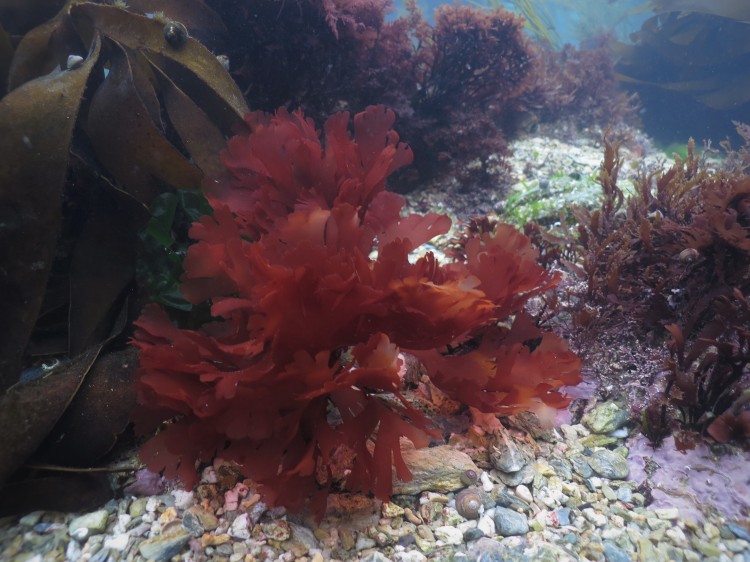







photographing seaweeds with a Canon Powershot part I
 During this spring and summer I have taken my Canon Powershot 130D to the shore in addition to my iPhone. I have been trying to take underwater pictures of seaweeds with it, which is a bit of a challenge as (when you are not snorkelling) you usually have to take the photos ‘blind’. Some of ’em however turned out quite nice, here is a selection.
During this spring and summer I have taken my Canon Powershot 130D to the shore in addition to my iPhone. I have been trying to take underwater pictures of seaweeds with it, which is a bit of a challenge as (when you are not snorkelling) you usually have to take the photos ‘blind’. Some of ’em however turned out quite nice, here is a selection.

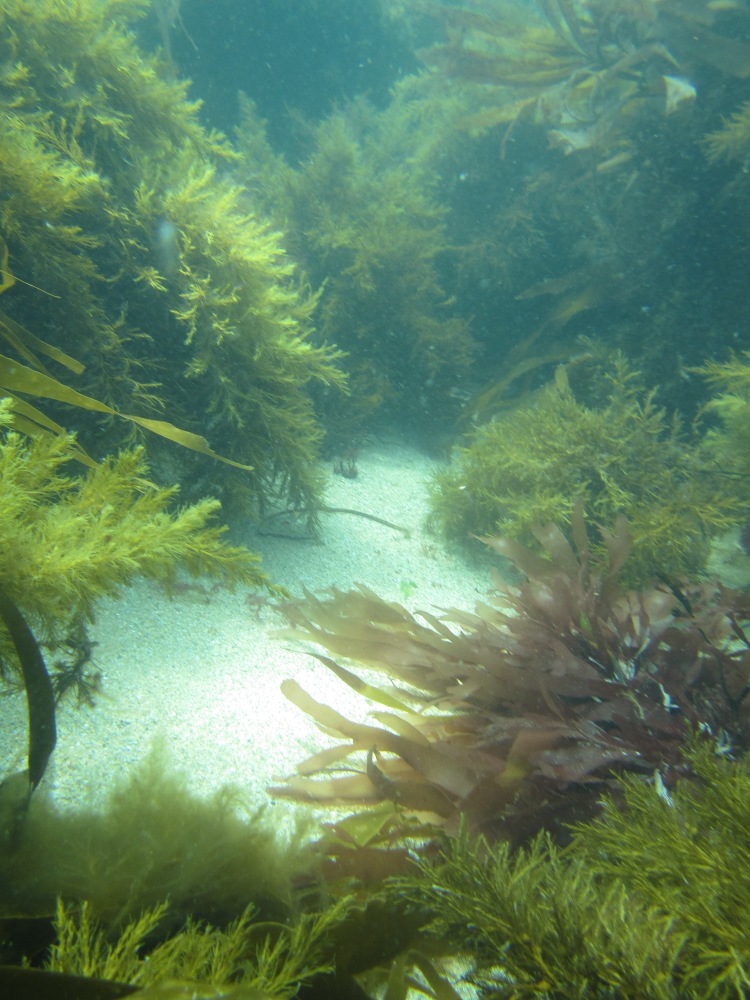 I still find it hard to identify species. Here are some I do know. First, Hairy sand weed Cladostephus spongiosus. Second, a pool with many reds, in the foreground Discoid forkweed Polyides rotundus. Third, the invasive species Grateloupia turuturu. The big plants bleached and died off in summer but the young ones are growing already. Fourth, (probably) Sea flax weed Stypocaulon scoparium. I will post some more pics soon.
I still find it hard to identify species. Here are some I do know. First, Hairy sand weed Cladostephus spongiosus. Second, a pool with many reds, in the foreground Discoid forkweed Polyides rotundus. Third, the invasive species Grateloupia turuturu. The big plants bleached and died off in summer but the young ones are growing already. Fourth, (probably) Sea flax weed Stypocaulon scoparium. I will post some more pics soon.

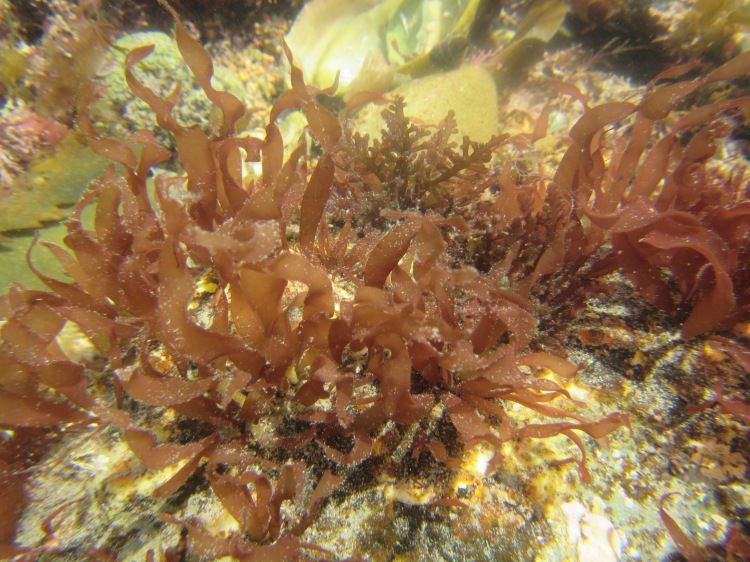

Seaweeds in the aquarium part III
A final post summarizing my experiences with seaweeds and writing this, I have regained my enthusiasm for trying to grow seaweeds in my aquarium. My New Years Resolution will be to get a proper marine planted tank going again! (The fact that the aquarium, currently devoid of seaweeds, looks less than great at the moment has made the decision to change it around easier as well…)
5. Some seaweeds establish naturally in the aquarium
I mentioned in the first seaweed post that it can be hard to ‘plant’ seaweeds in the aquarium but sometimes they just settle by themselves. One of my favourites, Chrysymenia wrightii (consistently misidentified as Dudresnay’s whorled weed throughout this blog…) started growing spontaneously from a rock:
This is currently happening with bright green Sea lettuce Ulva and what is probably Devil’s tongue weed Grateloupia turuturu. The outlet grid of the Tunze nanostream is a good place for seaweeds to settle it seems; I have currently a little pluck of Flax brick weed Chaetomorpha linum growing and had a couple of other species there in the past too. Spontaneous growth is of course the best way to get a seaweed aquarium going.
6. A list of Seaweed species I had in my aquarium
Perhaps of interest to a handful of people… I have tried to list all seaweeds I managed to identify and remember, and whether they did well (YES) or not (NO) in my unchilled aquarium (lighting spectrum and intensity used varied somewhat over time). Why some species did not do well I have no idea (see previous post); in some cases, seaweeds were eaten. I have not tried larger species such as Kelp as my aquarium is not that big.
Above: Green (Velvet horn), Brown (Wireweed) and Red (Harpoon Weed) seaweeds in the aquarium.
Red Seaweeds:
Solier’s red Stringweed Soliera chordalis – YES
Chrysymenia wrightii (no common name) – YES
Dulse Palmaria palmata – NO (eaten)
Harpoon weed Asparagopsis armata – NO
Common coral weed Corallina officinalis – NO
False eyelash weed Calliblepharis jubata – NO
Dumont’s tubular weed Dumontia cortorta – NO
Clawed fork weed Furcellaria lumbricalis– NO
Red grape weed Gastroclonium ovatum – NO
Bunny ears Lomentaria armentata – NO
Devil’s tongue weed Grateloupia turuturu – YES
Iridescent drachiella Drachiella spectabilis – NO
A tangle of different Red Seaweeds:
Brown seaweeds:
Estuary wrack Fucus ceranoides – YES
Serrated wrack Fucus serratus – YES
Bushy berry wrack Cystoseira baccata – NO
Bushy rainbow wrack Cystoseira tamariscifolia – NO (still my holy grail)
Wireweed Sargassum muticum – YES (this proved to be the easiest one of all to keep)
Green Seaweeds:
Common green branched weed Cladophora rupestris – NO
Flax brick weed Chaetomorpha linum – YES
Sea lettuce Ulva (lactuca) – YES
Velvet horn Codium tomentosum – YES
So 9 out of 21 species did OK in my aquarium which is actually not too bad (although I have forgotten a number of species that did not do well). Unsurprisingly, the invasive species were easiest to keep (5 YES in 16 natives, 4 YES in 5 non-natives; the difference is not statistically significant though).
Finally, I just wanted to mention that I have been updating the ‘links’ page recently. Regular commenter Marius has recently started a great blog about his new native marine aquarium with organisms collected at the west coast of Ireland: Irish Rockpool Aquarium Adventures, go check it out. A very nice rock pooling blog also is The Salty Scavenger which features loads of seaweed pictures. From now on, I will also register my rock pooling finds online here; with lots of volunteers doing that a great resource will be created that can be used for protecting marine habitats which of course is very important! I have also added a bunch of really useful links to facebook pages, for instance the ‘Coldwater Marine Aquarium Owners‘ group page.
Trefusis point
These are my local rock pools at the Trefusis headland near Flushing. On the right is Penryn River (which is not a river at all) with Falmouth on the other bank. Further to the right around Falmouth is the open sea. To the left the Fal Estuary (or Carrick Roads) going all the way to Truro, the capital of Cornwall.
The seaweed composition had again changed since I last visited. This time there was one red weed dominating the pools, I believe it is the Pacific invader Devil’s tongue weed Grateloupia turuturu (which appeared in my aquarium at some point as well):
The most common sea slug (nudibranch) here is the Sea lemon Archidorus pseudoargus:

